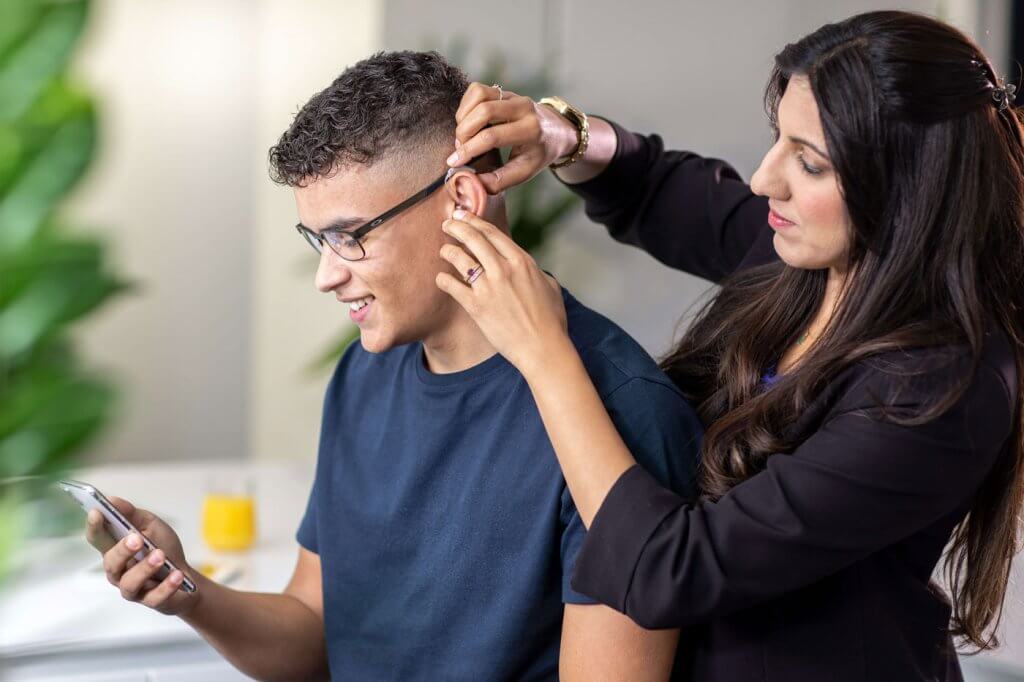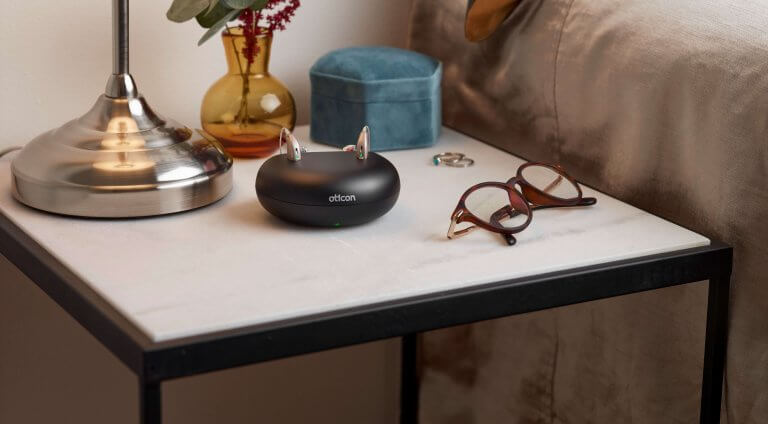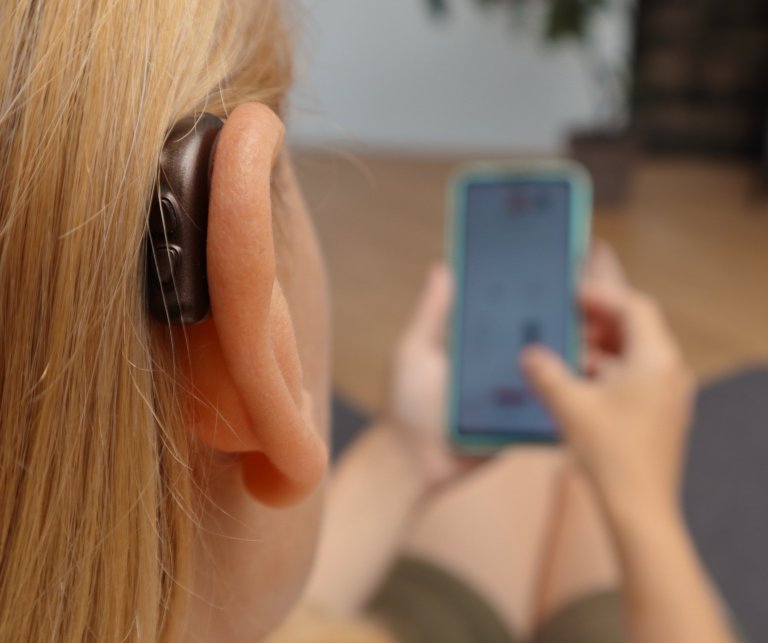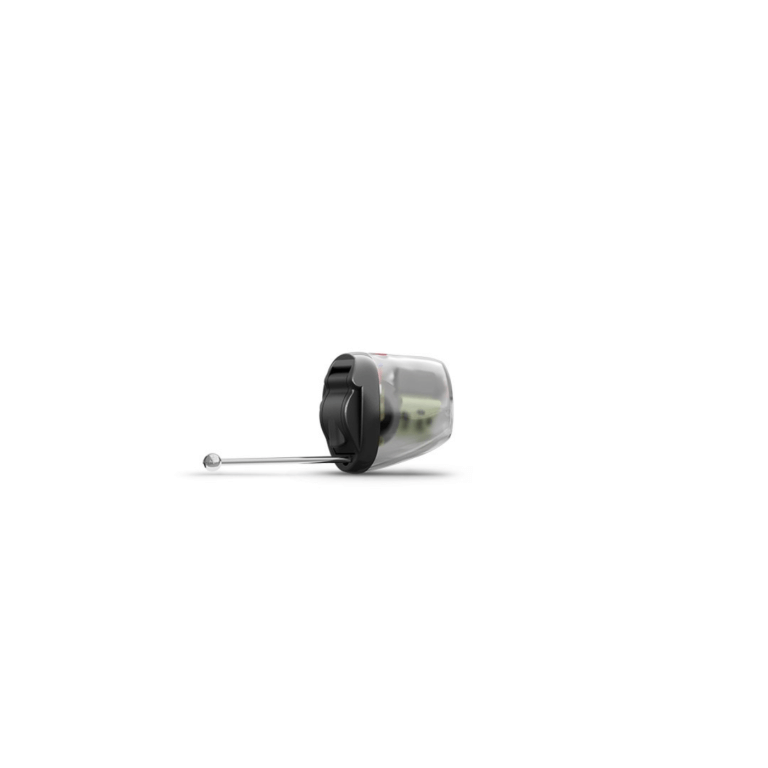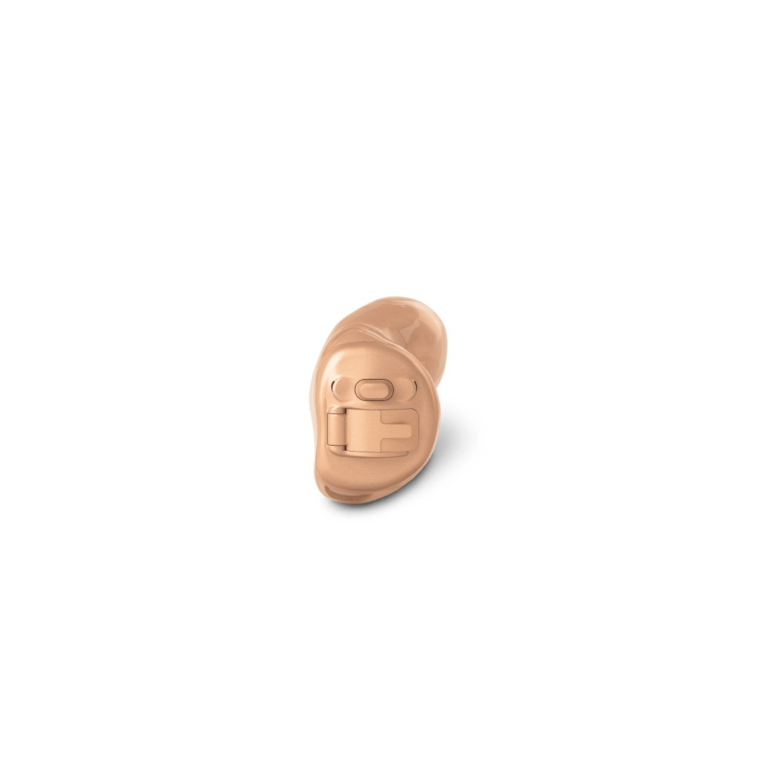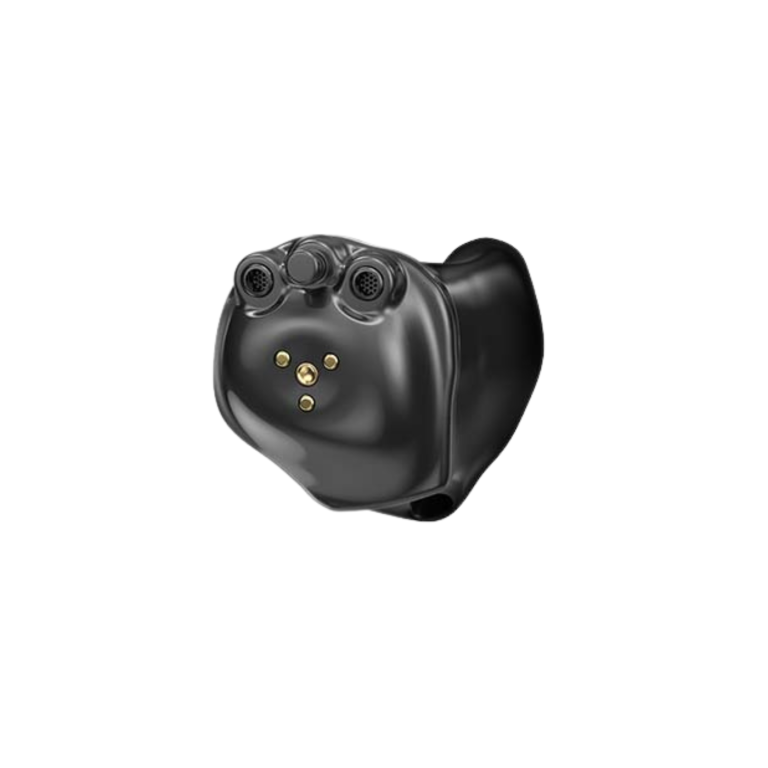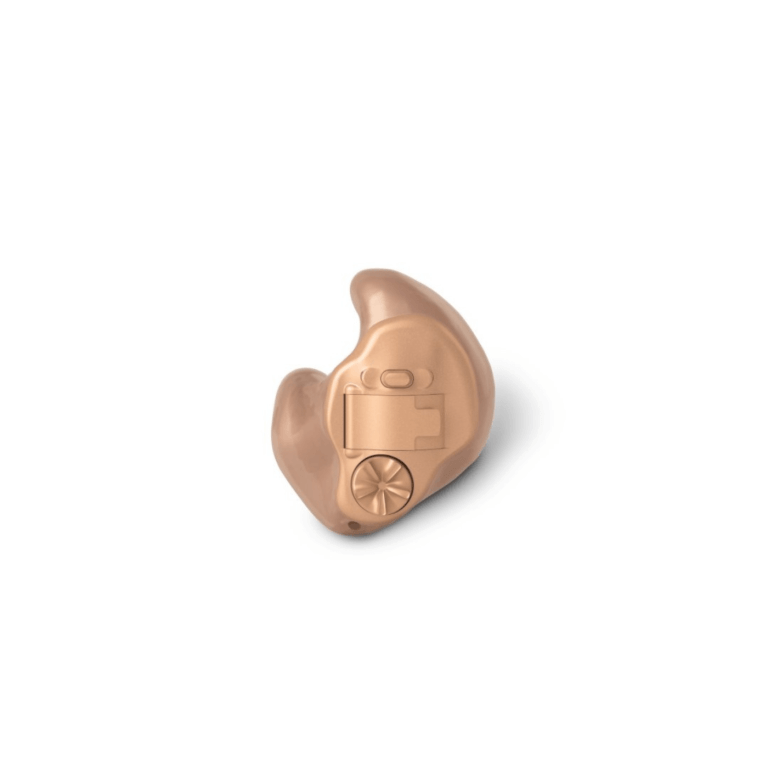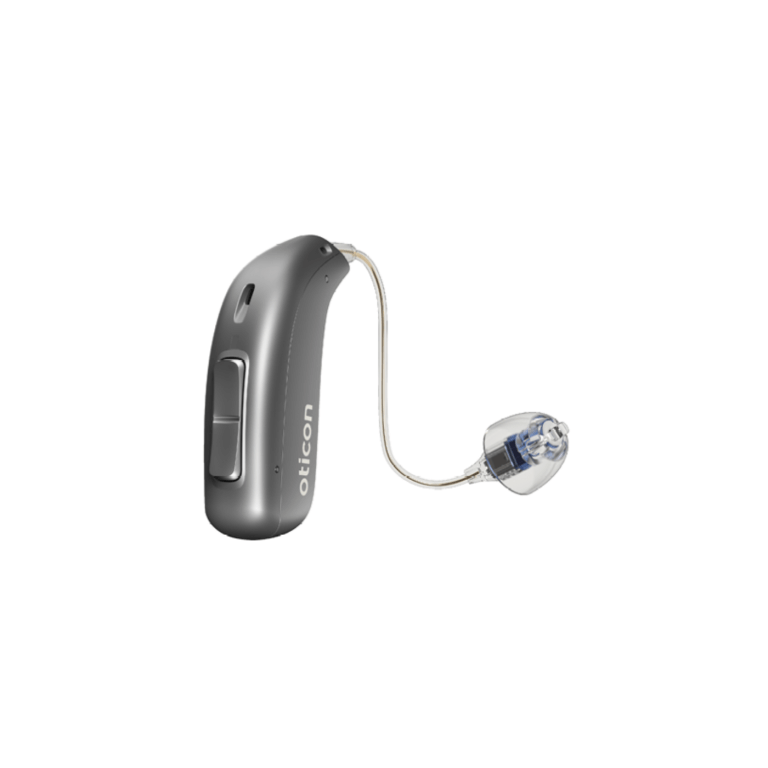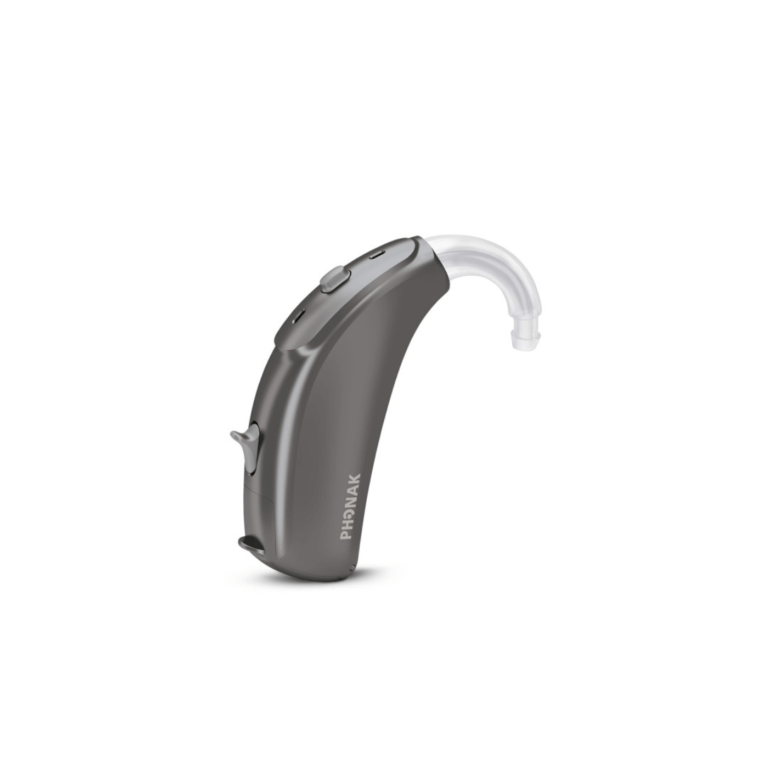Design and Styles
Hearing aid styles can range from smaller, more discreet designs to larger models that are associated with the image of hearing aids that you might be used to.
In-ear hearing aids (such as IIC, CIC and ITC models) are much more discreet and are custom-made to sit inside your ear – meaning they are almost invisible when you’re wearing them.
There are also larger models that are more traditionally associated with the phrase hearing aids. These are mostly Behind the Ear (BTE) and Receiver in Canal (RIC) models, where the main body of the hearing aid hooks behind the ear.
The most important factor that will decide which hearing aids you get is the suitability to your level of hearing impairment. Hearing aids are medical devices which come in different styles, all designed to best deal with different types of hearing loss.
Once you’ve narrowed down which types of hearing aids will best suit your hearing loss, you’ll be able to choose a suitable model based on your preferences and lifestyle to find the hearing aids you like the most.
Brand and Manufacturer
Hearing aid brands set their prices based on various criteria. The degree and quality of their research and development play a huge part in this. Their reputation and affiliation with others can also contribute to cost – some of the more well-known and trusted brands can demand a higher price point because of this.
To sum it up, the more well-known and respected a brand is, the more they can charge for their products. The benefit of this is they are able to invest more in product development, to provide higher quality hearing solutions for patients which are durable.

